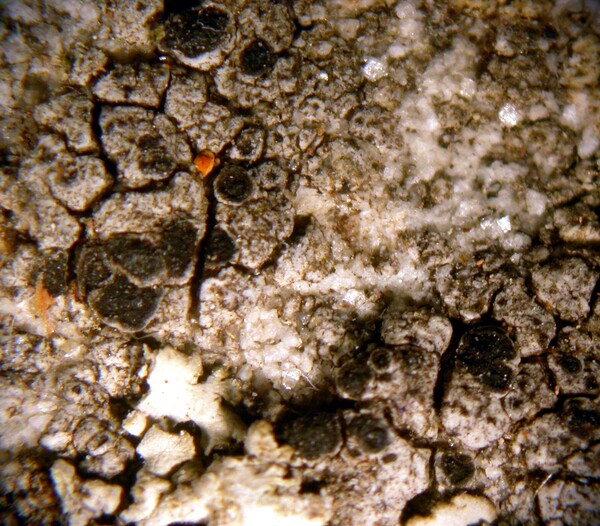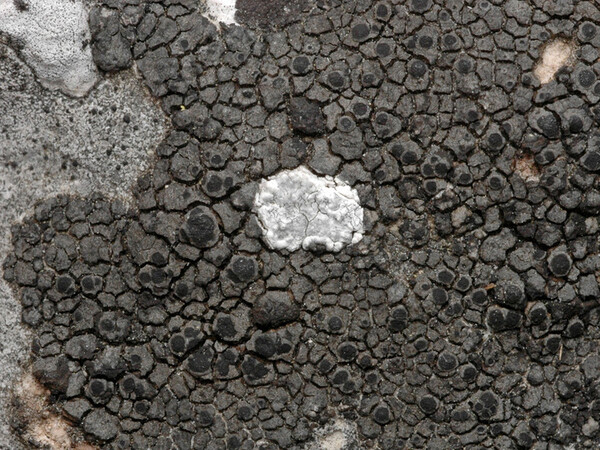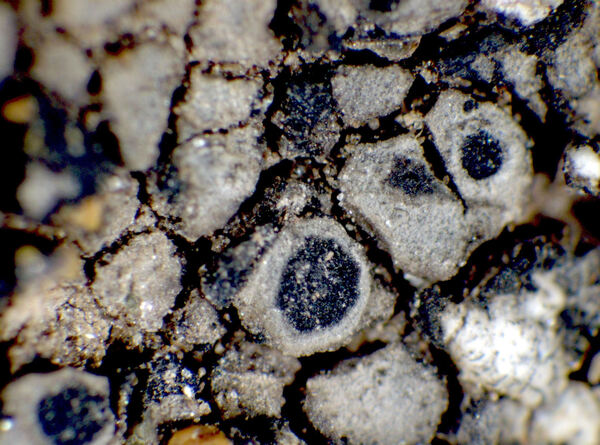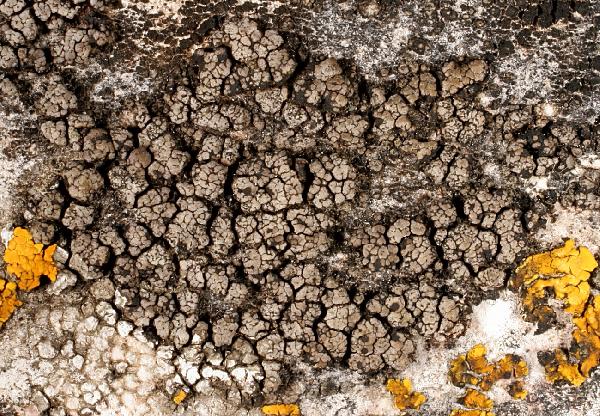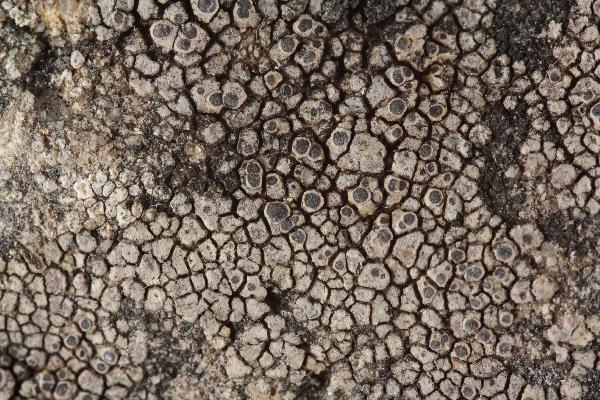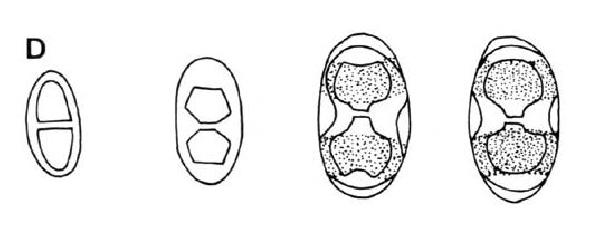Rinodina lecanorina (A. Massal.) A. Massal.
Geneac. Lich.: 19, 1854. Basionym: Mischoblastia lecanorina A. Massal. - Ric. Auton. Lich. Crost.: 41, 1852.
Synonyms: Berengeria lecanorina (A. Massal.) Trevis.; Lecanora controversa var. numida Stizenb.; Lecanora ocellata (Hoffm.) Nyl.; Lecanora sophodes var. pictavica Wedd.; Lecidea lecanorina (A. Massal.) Nyl.; Placodium ocellatum (Hoffm.) Duby; Rinodina controversa var. numida (Stizenb.) Zahlbr.; Rinodina ocellata (Hoffm.) Arnold non (Flot.) Branth & Rostr.; Rinodina sophodes var. pictavica (Wedd.) Zahlbr.; Verrucaria ocellata Hoffm.
Distribution: N - VG, Frl, Ven, TAA, Lomb (Lazzarin 2000b, Giralt & Llimona 1997), Piem (Isocrono & al. 2004, Watson 2014), VA (Piervittori & Isocrono 1999), Emil (Fariselli & al. 2020), Lig. C - Tosc, Marc (Nimis & Tretiach 1999), Umb (Nimis & Tretiach 1999, Ravera & al. 2006), Laz, Abr (Nimis & Tretiach 1999, Gheza & al. 2021), Mol (Nimis & Tretiach 1999, Garofalo & al. 1999, Caporale & al. 2008), Sar (Brackel & Berger 2019). S - Camp (Garofalo & al. 1999, Ricciardi & al. 2000, Aprile & al. 2003, 2003b, Garofalo & al. 2010), Pugl, Bas, Cal (Puntillo 1996), Si (Grillo 1998, Grillo & Caniglia 2004).
Description: Thallus crustose, up to 3 mm thick, areolate, pale to dark grey or rarely grey-brown, the areoles 0.6-1,5 mm wide, flat to subconvex, smooth, often with brown margins, without a distinct prothallus. Apothecia cryptolecanorine to rarely lecanorine, 0.5-1 mm across, immersed and appaering aspicilioid to subsessile, usually more than one per areole, with a dark brown to black, flat to weakly convex disc and a persistent thalline margin level with thallus. Epithecium reddish brown, 15-30 µm high K-; hymenium colourless, 80-120 µm high, not inspersed with oil droplets; paraphyses c. 1.5 µm thick at mid-level, the apical cells up to 6 µm wide; 80-150 µm high, colourless to pale yellow-brown. Asci 8-spored, clavate, the K/I+ blue tholus penetrated by a faintly amyloid apical cushion with parallel or diverging flanks, the wall K/I-, surrounded by a K/I+ blue outer layer, Lecanora-type. Ascospores 1-septate, brown, 13-20 x 7.5-12 µm, Bicincta-type, with a heavily pigmented band around each lumen, without a torus, the ontogeny of type A (apical wall thickening after septum formation). Pycnidia black, immersed. Conidia bacilliform, 4-6 x c. 1 µm. Photobiont chlorococcoid. Spot tests: K-, C-, KC-, P-, UV-. Chemistry: zeorin.Note: on the top of isolated boulders of limestone and dolomitic rocks, usually on nutrient-enriched surfaces such as in birds’ perching sites, often starting the life-cycle on Rinodinella controversa, with a wide altitudinal range but usually absent above treeline.
Growth form: Crustose
Substrata: rocks
Photobiont: green algae other than Trentepohlia
Reproductive strategy: mainly sexual
Commonnes-rarity: (info)
Alpine belt: absent
Subalpine belt: very rare
Oromediterranean belt: rare
Montane belt: rather common
Submediterranean belt: common
Padanian area: extremely rare
Humid submediterranean belt: common
Humid mediterranean belt: rare
Dry mediterranean belt: very rare

Predictive model
Herbarium samples
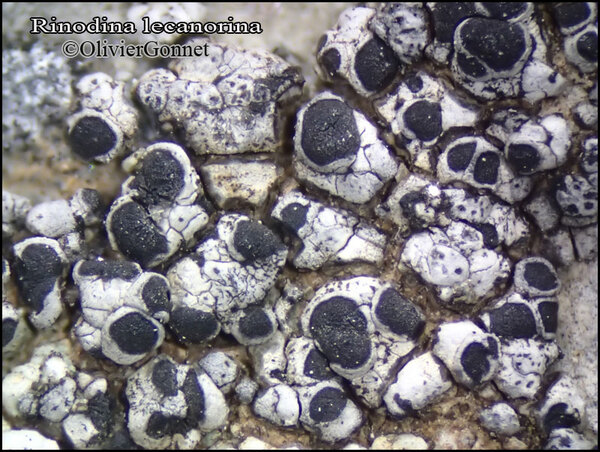
Courtesy Danièle et Olivier Gonnet - Source: https://www.afl-lichenologie.fr/Photos_AFL/Photos_AFL_R/Textes_R2/Rinodina_lecanorina.htm
France, 25/7/2014 - Saint-Paul-sur-Ubaye, alt. 2000 m - Alpes de Haute-Provence
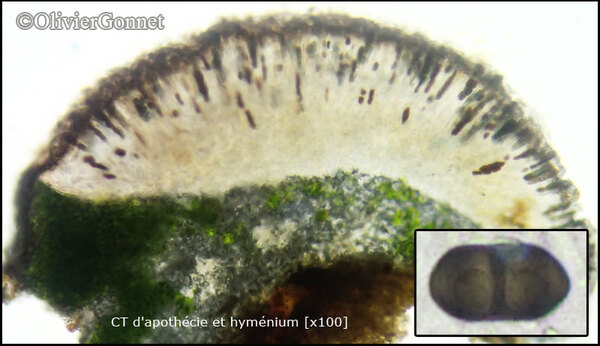
Courtesy Danièle et Olivier Gonnet - Source: https://www.afl-lichenologie.fr/Photos_AFL/Photos_AFL_R/Textes_R2/Rinodina_lecanorina.htm
France, 25/7/2014 - Saint-Paul-sur-Ubaye, alt. 2000 m - Alpes de Haute-Provence
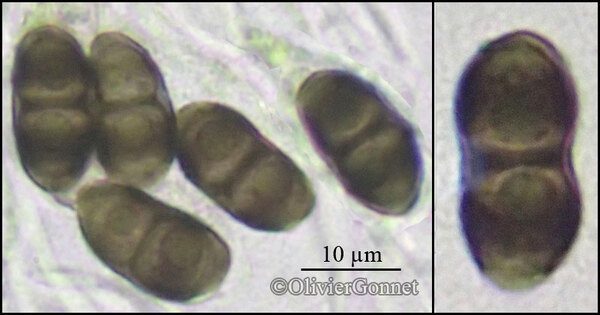
Courtesy Danièle et Olivier Gonnet - Source: https://www.afl-lichenologie.fr/Photos_AFL/Photos_AFL_R/Textes_R2/Rinodina_lecanorina.htm
France, 25/7/2014 - Saint-Paul-sur-Ubaye, alt. 2000 m - Alpes de Haute-Provence
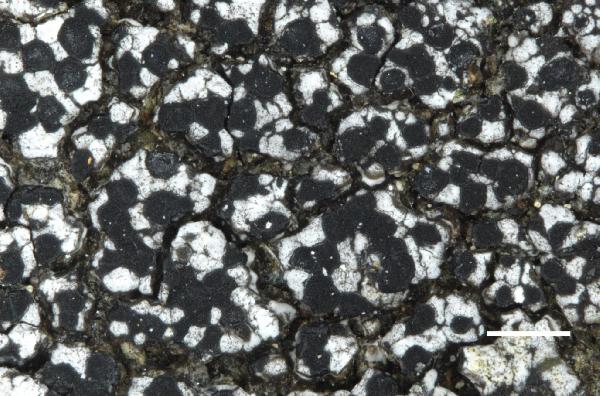
Source: Pykälä, J. & Myllys, L. 2023. Additions to the lichen flora of Finland. XI. Graphis Scripta 35 (5): 66–74. Oslo. ISSN 2002-4495. - CC BY-4.0
Pykälä 57592 (H). Scale bar = 1 mm
Growth form: Crustose
Substrata: rocks
Photobiont: green algae other than Trentepohlia
Reproductive strategy: mainly sexual
Commonnes-rarity: (info)
Alpine belt: absent
Subalpine belt: very rare
Oromediterranean belt: rare
Montane belt: rather common
Submediterranean belt: common
Padanian area: extremely rare
Humid submediterranean belt: common
Humid mediterranean belt: rare
Dry mediterranean belt: very rare

Predictive model
| Herbarium samples |

Courtesy Danièle et Olivier Gonnet - Source: https://www.afl-lichenologie.fr/Photos_AFL/Photos_AFL_R/Textes_R2/Rinodina_lecanorina.htm
France, 25/7/2014 - Saint-Paul-sur-Ubaye, alt. 2000 m - Alpes de Haute-Provence

Courtesy Danièle et Olivier Gonnet - Source: https://www.afl-lichenologie.fr/Photos_AFL/Photos_AFL_R/Textes_R2/Rinodina_lecanorina.htm
France, 25/7/2014 - Saint-Paul-sur-Ubaye, alt. 2000 m - Alpes de Haute-Provence

Courtesy Danièle et Olivier Gonnet - Source: https://www.afl-lichenologie.fr/Photos_AFL/Photos_AFL_R/Textes_R2/Rinodina_lecanorina.htm
France, 25/7/2014 - Saint-Paul-sur-Ubaye, alt. 2000 m - Alpes de Haute-Provence

 INDEX FUNGORUM
INDEX FUNGORUM
 GBIF
GBIF
 DOLICHENS
DOLICHENS

